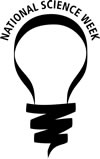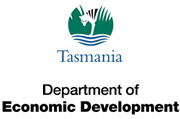
| About the Young Tassie Scientists Program | |||
| Not
all scientists fit the stereotype of a middle-aged male with glasses
and a lab coat! The Young Tassie Scientists program is aimed at raising
awareness of the role undertaken by young scientists in different
areas of scientific research in Tasmania.
It involves developing profiles of selected scientists and publicising these during National Science Week. Scientists also participate in key National Science Week events and present talks to school groups at both primary and secondary levels. National Science Week is Australia’s largest national festival, raising community awareness of the value and relevance of science, acknowledging Australia’s scientific achievements and inspiring young people to investigate careers in science, engineering and technology. By encouraging interdisciplinary collaborations, resulting in a range of events from open days at research institutions to art exhibitions in galleries, National Science Week reaches diverse audiences and engages members of the community who may not normally participate. In 2005, the Young Tassie Scientist program has once again created successful science/art collaborations with students from the University of Tasmania’s School of Fine Arts. These students will create artworks inspired by the Young Tassie Scientists' research, resulting in an exhibition “eMerging II” at Salamanca Arts Centre during National Science Week and the following Tasmanian Living Artists Week. The Young Tassie Scientist program aims to raise awareness of the value and relevance of science, engineering, technology and innovation; it assists in making connections between studying science and resulting jobs and careers; it helps to build a scientifically literate society - and it celebrates the excitement of science and innovation! Young Tassie Scientists 2005 is made possible by National Science Week funding from the Department of Education, Science and Training, and is also supported by the Department of Economic Development and the University of Tasmania.
|
|||


